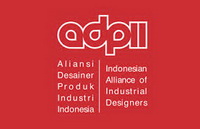Perancangan alat pencacah limbah material 3D printer dengan metode Axiomatic House of Quality (AHOQ)
Abstract
Del Institute of Technology has Laboratorium Desain Produk (Lab Desprin) that based on additive manufacturing and 3D printer facilities. In its operation, the 3D printer uses acrylonitrile butadiene styrene (ABS) filament raw materials, polycarbonate (PC), polyvinyl alcohol (PVA), nylon, Poly Lactic Acid (PLA), Polyethylene (PE), Polypropylene (PP), and Investation Casting Wax. . The remaining filament and 3D printer printouts from the practical process require storage space in the laboratory. The material that makes up this filament itself is difficult to decompose by nature and has the potential to become harmful waste. This study aims to design a safe and practical 3D printer waste material chopper to recycle the remaining filament and 3D Printer printing results. With the Axiomatic House of Quality (AHOQ) method, the customer requirements for the enumerator are obtained, namely the appropriate size of the chop, has an indicator that it is on or not, safe in operation, not noisy, easy to move, and saves electricity. To meet this requirement, a waste chopper has been designed with specifications that it has a filter with a size that is adjusted to the desired chopping size, a cover on the material input channel as a security function and reduces noise, and uses a bicycle as a source of motion and saving electricity. The working system of the tool is a chopper tool by utilizing mechanical motion by rowing a bicycle as a source of motion for the chopper blade. This designed tool has been successfully built with the ability to chop materials with a thickness of > 15 mm and a noise level of less than 85 dB.
Keywords
Full Text:
PDFReferences
Ali, Agustiawan, I., & Aji, D. (2018). Pemanfaatan Putaran Roda Sepeda Guna Menghasilkan Energi Listrik. In Seminar Nasional – XVII Rekayasa dan Aplikasi Teknik Mesin di Industri Kampus ITENAS (pp. 57–62).
Aminudin. (2019). Pemanfaatan Sampah Plastik Menjadi Kerajinan Tangan Guna Meningkatkan Kreatifitas Warga Sekitar Institut Teknologi dan Bisnis Ahmad Dahlan ( ITB-AD ) Jakarta. Jurnal Abdimas BSI, 2(1), 66–79.
Andriani, D. P., Choiri, M., & Desrianto, F. X. B. (2018). Redesain Produk Berfokus Pada Customer Requirements Dengan Integrasi Axiomatic Design dan House of Quality. Jurnal Ilmiah Teknik Industri, 17(1), 71–82. https://doi.org/10.23917/jiti.v17i1.5867
Azhari, C., & Maulana, D. (2018). Perancangan Mesin Pencacah Plastik Tipe Crusher Kapasitas 50 kg/jam. Isu Teknologi, 13(2), 7–14.
Dal, B., Tugwell, P., & Greatbanks, R. (2000). Overall equipment effectiveness as a measure of operational improvement A practical analysis. IJOPM, 20(12), 1488–1502. https://doi.org/10.1108/01443570010355750
Fang, Y., Fitzhugh, E. C., Scotte E, C., Gardner, J. K., & Zhang, S. (2016). Effects of Workloads and Cadences on Frontal Plane Knee Biomechanics in Cycling. Official Journal of the American College of Sports Medicine, (29), 260–266. https://doi.org/10.1249/MSS.0000000000000759
Laksmana, T. A., Rachmat, H., & Tahir, R. (2020). Strategi Pengembangan Wisata Bersepeda Berdasarkan Karakteristik Motivasi Pesepeda Urban (Pada Grup Sepeda TOC dan JGC-SCAM). Jurnal Pariwisata Terapan, 4(1), 73–91. https://doi.org/10.22146/jpt.53303
Manchulenko, N. G. (2001). Applying Axiomatic Design Principles to The house of Quality. Electronic Theses and Dissertations. 1204. University of Windsor
Marbun, C. E., & Siboro, B. A. H. (2020). Perancangan Meja dan Kursi Komputer Sesuai Dengan Sistem Smart Class pada Laboratorium Desain Produk dan Inovasi Institut Teknologi Del. Jurnal Teknik Industri, 10(3), 255–265. https://doi.org/10.25105/jti.v10i3.8411
Mehrpouya, M., Dehghanghadikolaei, A., Fotovvat, B., Vosooghnia, A., Emamian, S. S., & Gisario, A. (2019). The Potential of Additive Manufacturing in the Smart. Applied Science, 9, 2–34. https://doi.org/10.3390/app9183865
Mulyanto, T., & Sapto, A. D. (2017). Analisis Tegangan Von Mises Poros Mesin Pemotong Umbi-Umbian dengan Software Solidworks. Presisi, 18(2), 24–29.
Nasution, M. (2019). Ambang Batas Kebisingan Lingkungan Kerja agar Tetap Sehat dan Semangat dalam Bekerja. Buletin Utama Teknik, 15(1), 87–90.
Nor, K. M., Arof, H., & Wijono. (2004). Design of a 5 kW tubular permanent magnet linear generator. In International Universities Power Engineering Conference (pp. 528–532). https://doi.org/10.1109/UPEC.2004.192405
Pambudi, A. I. (2017). Analisis Pengaruh Internal Geometri terhadap Sifat Mekanik Material Polyactic Acid (PLA) Dipreparasi Menggunakan 3D Printing. Skripsi. Institut Teknologi Sepuluh Nopember Surabaya
Prasetyo, B., & Trisyanti, U. (2018). Revolusi industri 4.0 dan tantangan perubahan sosial. In Prosiding SEMATEKSOS 3 “Strategi Pembangunan Nasional Menghadapi Revolusi Industri 4.0” (pp. 22–27).
Prasetyo, H., & Sutopo, W. (2018). Industri 4.0: Telaah Klasifikasi Aspek dan Arah Perkembangan Riset. J@ti Undip: Jurnal Teknik Industri, 13(1), 17–26. https://doi.org/10.14710/jati.13.1.17-26
Purnomo, A. (2016). Pemanfaatan Sepeda Statis dengan Generator Linier untuk Pembangkit Listrik Ramah Lingkungan. Skripsi. Universitas Muhammadiyah Surakarta.
Putra, M. D., Tama, I. P., & Andriani, D. P. (2016). Analisis Perancangan Alat Bantu Material Handling Produksi Genteng Menggunakan Metode Axiomatic House Quality. Jemis, 4(1), 19–30. https://doi.org/10.21776/jemis.04.01.03
Sinaga, H. H., Siboro, B. A. H., & Marbun, C. (2021). Desain Meja dan Kursi Tutorial Laboratorium Desain Produk dan Inovasi Menggunakan Metode 12 Prinsip Ergonomi dan Pendekatan Antropometri. Jurnal Sistem Teknik Industri, 23(1), 34–45. https://doi.org/10.32734/jsti.v23i1.4880
Tesalonika, J., Siboro, B. A. H., & Marbun, C. (2021). Perancangan Stasiun kerja instruktur laboratorium desain produk dan inovasi menggunakan metode ergonomic function deployment (Design of instructor’s works station using ergonomic function deployment method). Operations Excellence: Journal of Applied Industrial Engineering, 13(2), 148–158. http://dx.doi.org/10.22441/oe.2021.v13.i1.009
Thaha, H. M., & Prasetio, D. E. A. (2021). Perancangan Alat Bantu Pengujian Komponen Gear Pump HD 785-7 di PT Saptaindra Sejati. Jurnal Baut Dan Manufaktur, 03(1), 47–52.
Wahyono, H. (2019). Pemanfaatan Teknologi Informasi dalam Penilaian Hasil Belajar pada Generasi Milenial di Era Revolusi Industri 4 . 0. In Proceeding of Biology Education (Vol. 3, pp. 192–201).
Wiryajati, I. K., Satiawan, I. B. W., & Citarsa, I. B. F. (2017). Teknologi Pencacah Limbah Plastik Berbasis Motor Listrik di UD Sportif dan Majeni. Jurnal Abdi Insani Unram, 4(1), 8–13.
DOI: https://doi.org/10.24821/productum.v6i1.6748
Refbacks
- There are currently no refbacks.
p-ISSN 2477-7900 | e-ISSN 2579-7328

This work is licensed under a Creative Commons Attribution 4.0 International License.
Like & Follow Us










